Tjaša: And so are you now based in New York or are you still based in the Bay Area?
Laurel: Kinetic Light rehearses a great deal in New York at this time. We are truly a national company. My home is Atlanta. Michael is in Oregon. We are coming together from all over. Right now the needs of our work, particularly when we're rehearsing the aerial work, we have to have a home for that. So at this point in time, that is New York. Yes. But everyone is traveling a great deal to make this work.
Tjaša: And so Wired was really your company's first aerial work. And you guys started developing this in a residency really during the pandemic. Can you speak a little bit about the practice, the rehearsal? How did you come to this idea? What was the need or the decision to involve aerial? And then really you created this together with Chicago Flyhouse, who was helping with the bungees and with the aerial tracking systems, with the rigging. So how did you figure out what you needed and what was the process of developing this technology together?
Laurel: Very long. Very long, very detailed, and with a massive number of people involved over time. This actually started well before the pandemic. Wired was originally supposed to be a 2020 premiere, so we already had a substantial amount of time in on it prior to lockdowns. We thought we were going into polish rehearsals quite shortly really. I tend to say aerial started out as a joke, at least I was about half joking. As we were working on Descent, as we were working on the ramp, we were actively having to develop new technique for working, not just on a slope, but on a curved and constantly changing slope. And once you're doing one thing, how do you push it further? So I was always saying, "Okay. Next piece, aerial."
In my head, this was maybe bungees, maybe straps or rings or something. And of course, Wired turned out to be bungees and hard line and so many more things. Chicago Flyhouse did come in to assist with rigging automation and to provide our automation equipment. Alice and I worked with them in Chicago and they took us on as a project. We worked with so many riggers over the course of this in order to develop the completely custom harnessing techniques that we use and which are only possible because of the very particular engineering of our chairs. And we had to again, develop an entirely new set of techniques in order to fly in the way that we do embodied in our wheelchairs and maintaining that full embodiment, the fullness of the choreography in air. That was really absolutely critical to us.
And then when New York went into lockdown, I was actually on what was supposed to be a one night turnaround in Atlanta. I'd just flown home to basically drop one set of bags and grab another and come straight back. So we were very much midstream. And after a few months we figured out how we could go into bubble residency, bring the full team together. We added some additional folks. We brought in more rigging and automation expertise. And really that gave us the opportunity to go much deeper and really dig in on the development of the piece. So the work that finally premiered was most certainly not the work that would've premiered had it come out as planned in 2020. It was something much more extensive. Of course, much more polished and also more satisfying.
Tjaša: Yeah. So when you watch the performance, it looks like magic. And so you ask yourself, is this is programmed? Are they doing this? Are they pulling themselves in some way or is there a handler backstage? What does this really look like from a creator's and dancer's perspective?
Laurel: That is exactly what we want it to look like. There are elements of it that should look like magic. There are pieces in any production where we give away, where we show you what we're doing and how we're doing it and then there's pieces of it that should just be like we're floating. I have to note, I had absolutely nothing to do with the automation software or the automation hardware. That is entirely Chicago Flyhouse's responsibility. My part of making us fly is the chair design. But yeah, there are some parts of the show where we are entirely under our own power. There are some parts that are being operated by one of our flight operators who are sitting just in front of the stage. There's a lot of different parts going on. And while you may only see a few people on stage, there are four times as many people actually involved in the production with our flight crew, our stage management, our production support team, our design team, and so forth.
Tjaša: How did you thread the very thin line between risk taking and between safety? Did you maybe fly dummies first before people actually got into the wheelchairs and into the bungees and the setups?
Laurel: Well, so this is an interesting question because this is something that was new to all of our riggers as well as to us. Honestly there was a lot of math involved. When you're working in aerial or in any field where safety is an issue, you know your loading strengths of all the equipment. There are equations for the load that things can take at certain angles and in certain configurations. And of course, all of our riggers, our harness experts and our flight supervisor were experts in those equations. And I knew the tolerances, I knew the material strength and what our chairs are designed for as well as being an expert in strapping and functionality and performance and the kind of physical limits of strapping. And as dancers, as athletes, we are very much accustomed to having to constantly listen to our bodies, be aware. Feel. If we're moving into a situation that could have some physical risk. We go very slowly and very carefully and piece-by-piece monitor, listen to what our body is telling us, feeling as best we can, things like joint alignment and the amount of force being placed on us in different ways.
And so then we had to train to it. We certainly didn't just leap into the air and begin swinging about wildly. That takes training and practice among other things. Not to become so dizzy that you can't focus. That is actually a matter of training. So yeah, we moved slowly and carefully with supervision from our trusted, certified, qualified, insured, et cetera, et cetera, professionals at every possible stage. And yes, we were doing something very much completely new.
Tjaša: And did the automation software already exist or was it adjusted or written specifically for you and for this project?
Laurel: This is something that is already in existence and is very well tested. And when I say automation, that's easy to misunderstand. In this context, automation just refers to operating the machinery. It doesn't actually mean that it's pre-programmed. As a matter of fact, almost everything you see in Wired is happening live either under the control of an artist on stage or under the control of one of the flight operators. A real live person in the audience. We have a lot of debates about the best way to do it, and this was the solution that all of the personnel in charge of our safety were happiest about.
Tjaša: Fantastic. So you were never really the mercy of a program of a machine. There was somebody absolutely live and alert handling this.
Laurel: Yes. Or you could say we're always at the mercy of a machine which can stop and they do sometimes. It is possible. As much care as we take and as careful as everything is, it is possible for example, that one of the winches will stop, which is not dangerous. It just stops. But that's a good reason to have that live person in order to make appropriate adjustments whether to get things going again. And that's actually also a situation that we practice if, for example, the power to an entire venue should go out, and suddenly we're just hanging out there swinging in the middle of the air. So our team periodically drills exactly what to do in that situation. And again, those are very well practiced, well-known rigging techniques that anyone who flies humans can study and practice.
Tjaša: So this is almost like fire drills.
Laurel: Yes. Although we sincerely hope that that's never the cause of needing to actually run one of these of course. But rescue drills.
Tjaša: Rescue drills. Yes. Because these winches are very heavy on the taking of the electricity. You can’t be in certain older buildings that don't have the infrastructure to really support that kind of electricity intake.
Laurel: They are specially wired for that. Like other production technology, we're not just going in and plugging a man into the wall. They have to have their own particular power drops, high power conditioned safe power. But it's possible that, for example, if the entire block loses power, of course our equipment is also going to lose power. I think everyone who's been performing for a while has a story about that happening. There's one show somewhere in your career where you've lost power, right?
Tjaša: Has that happened to you?
Laurel: Oh, certainly. It's just that usually like it's only the lights going out and hopefully it comes right back on. But what if it didn't? So we practice those drills for that just in case.
Tjaša: I have to ask, what was a happy accident? What was the best thing that happened during this process of making and performing Wired? And then maybe what's the most unpleasant experience that you've had that you're willing to share?
I focus both my choreographic and technical practices on working in the unknown and working in the new and trying things that haven't been done because that moment of discovery is just sheer joy.
Laurel: It's really impossible, I would say to pick just one happy accident. Because we were setting off into the unknown into something completely new there were so many things that we just discovered. And I love being in that place. I focus both my choreographic and technical practices on working in the unknown and working in the new and trying things that haven't been done because that moment of discovery is just sheer joy. There's one moment... And we filmed this for a short video, and we've done it a few times since where I had been intending to do something that we do in one moment in Wired where Alice is being lifted from the stage on her line, and I sprint in and reach for her and we swing together. And on that day, I was just... We were going for a little bit of show here and actually trying to see if I could jump off one of the little baby ramps we use for our Under Momentum show. And when I came off the ramp and went for my hold, I had just a little bit of sideways momentum. So we start spinning and going in this circle that was just stunning. And that's something that we've certainly kept, but there are so many moments like that.
Tjaša: I love that.
Laurel: And yeah. Again, on the unpleasant side, aerial is really hard and all dance is hard. And certainly so much of dance involves serious discomfort, shall we say. But anyone who's done aerial work is deeply familiar with the kinds of bruises when you're being held in the air by a bar or by a couple of nylon straps. It is potentially quite painful. And in training, in rehearsal, when you're spinning about, particularly if you're spinning... Imagine you're swinging around your own center and now you're spinning while you're swinging around your own center, and then you're upside down. So your middle ear is getting sloshed around in all three dimensions at once very erratically. You can get quite ill. There are definitely some moments of the rehearsal and the practice that are not wholly comfortable and it's still worth it.
Tjaša: Yeah. And you were able to train yourself with that, through that, out of that? Or do you still get ill when you're rotating and spinning?
Laurel: I think everyone... You can always figure out a way to make yourself nauseated. If you're spinning fast enough or in a weird enough direction. But you do train for it to be less so to manage it.
Tjaša: So you become better at managing it.
Laurel: You learn not to spin too quickly, shall I say.
Tjaša: I was really struck, when I watched the performance of Wired, by the beautiful audio narration. Everything was described in detail, and it felt like that was poetry. And obviously that this was very much intentional and on purpose. And I'm just curious about how you develop this text.
Laurel: So our approach to audio description is one that strives for both richness and choice. Had you been in the live theatrical performance in the app, you would've had multiple choices of what to listen to, either in a specialized environment as if there were actual speakers in space with you so that you could go closer to the speakers that you wanted to listen to, or through a menu environment that would allow you to just select in isolation the tracks that you wanted to listen to. And this comes from our blind and low vision colleagues way back when we were doing our very first showing of Descent, who expressed to us that the audio description at the time, very conventional method of providing audio description with a live describer, speaking live during the showing hadn't conveyed all the information about the artistry of the show. They could hear people gasping and feel them leaning forward in their seats in ways that simply wasn't reflected in the audio description.
So our practice now is that the audio description is a part of the art itself. It is developed with the choreography and with the production because it's really no different, no further away to listen to a dance than it is to watch it. Dance isn't a visual art in the first place. So the visual experience of dance is already a translation. So understanding the non-visual experience of it, the many ways through soundscape, poetry, conventional or non-conventional description through our breath and heartbeats, or the sounds of us moving through the dance. We try to create all of these. Now in the recording that you're talking about, we offered I think three versions. One without audio description, one with that single track, and one with a mixed multi-track. Because offering that live, fully choice-full experience is considerably more difficult in a recorded medium.
But yes, we work really, really closely and deeply with our describers as collaborating artists. This isn't something where we're giving them a finished performance and saying, here, describe it, but something where they are in the process with us and we're going back and forth about this. And that feedback is making it into the choreography, into the lighting, into the projections, into the tactile and haptic experiences if someone's coming to this primarily through touch. Yeah. It is something that is just such an enormous part of our practice for our non-visual audiences.
Tjaša: It was an incredible experience. This was my first, and I just felt... I don't know. I could feel the richness on a totally different level. I was amazed at how much I'm seeing without maybe having descriptives for it or rationally thinking about it. There was a whole other component. I think that I'm a very auditory person. So it was just incredibly helpful to have that. And it was so beautiful. It was beautifully narrated with a beautiful language. It was super descriptive too. So definitely super impressed with what you've created. Did you call them art describers? Art descriptors? What was the term that you used? Audio describers.
All access methods is art in and of themselves… What does it mean to have an “accessible” experience of art? It means you're just having the experience that is in the way in which you primarily interact with the world.
Laurel: Yeah. That's the most common professional term. We're seeking to push the boundaries where we recognize audio description as an art form. All access methods is art in and of themselves, and that there's no difference between, as I said, the kind of core of the thing and the “accessible.” What does it mean to have an “accessible” experience of art? It means you're just having the experience that is in the way in which you primarily interact with the world. So watching dance is an access method for some people, and listening to it is an access method for others. But all of this is about working with collaborating artists and really pushing what people understand that to mean from the outside.
Access is often regarded as a service, something that you come along and tack on after the fact. Like you build a building and then you shove a wheelchair ramp somewhere around the back, probably going past the dumpsters, probably to a door that's locked until you sit out on the sidewalk and yell until someone comes out and stands at the top of the stairs and goes: grumble, grumble, grumble, fine, we'll unlock the stupid door. That is not access. Access starts from the beginning. It's something that you're thinking about all the way through. It's assuming that there are people in your audience coming to you in a range of different ways of being, moving, experiencing the world, and you're giving all of them consideration. That you're creating these equitable experiences rather than saying, okay, my art is only for people who can see and people who can see in this certain way. Why would we impose that limitation? We're greedy. We want everybody.
Tjaša: That's great. That's great. Yeah. I'm curious more about the app that you have, that you have built, that you have developed. How did you go about it and how many collaborators are there, and how are you really creating these multisensory experiences in multisensory tracks for this app?
Laurel: So Audimance, as I said, came about at the instigation of our non-visual colleagues, and at every stage, working through advisors, working through testers. Trying out different facets of it. Now at this point, this is something that we always implement in our live performances, and the content for each new show is developed as a part of the creation. So for us, it's very plug and play. Development is ongoing, on the app so that we can move it out and have more people begin using it. We currently have a few test companies who are implementing it in their own performances, and we're actively looking for sponsors and additional developers to help us move this to a native mobile app. So right now it's a web application. It's something that you get into the theatre and you load. Ideally this would be something where you go to the app store, you download it, and when you get your ticket, that just automatically goes to the app and it starts downloading all of that content in the background so that when you arrive at the theatre, it's just ready for you.
And it's worth noting also, I think that this isn't just about the show description. This also includes things like the spoken version of the program, which is something that we find people often don't think about. Your program's not accessible if you have to have eyes to read it, if it only comes on paper. It can include things like an audible map of the venue if you're coming into a venue that you're not familiar with. Where's the box office? Where's the quiet space? Where are the restrooms? How do you get to your seat? And we often include things like any additional materials we may have available about the show, descriptions of the tactile objects, essays or commentary, or if we have an additional access guide for the show, that might include a roadmap or might include notes. For example, if there are any notable moments in the sound or in the experience. Wired, for example, uses a very light water-based haze in one section. And while we have fans pointing it away from the audience, we do note that there may be some people who do not want to be seated in the first three or four rows. That's an example of something you might put in an access guide.
Tjaša: Yeah. I'm really interested in haptic interpretation. I'm just curious if there is a unified code for that. I know that David Eagleman developed his own haptic vest. I know that there's been other companies developing haptic vests, but I guess my question is there... There's a braille for blind people. Is there something that's similar in the haptic world?
Laurel: Haptics is a super exciting and newer area of development in dance interpretation in particular. And for folks who aren't as familiar with it, that little vibration that your phone gives you when you touch it to let you know you've done something good, that is haptic. We're just talking about vibration. We have tested all of the vests and all the made devices on the market, and none of them were quite right for our needs. We need something that allows a great deal of nuance.
For example, in Wired, we actually work with wire itself that is placed in the audience that you can take in your hands, your fingertips, or that you can touch to the cheek, or I've seen people lay it across their chest or wrap it around their shoulders. And using the wire medium in this way allows us to give a very nuanced version of our sound score where you can feel the different frequencies, the chords, and the melody singing through the wire. So the wire itself becomes an enlivened lively object. Just as we're livening it on stage through movement, it's singing in your hands in the audience. Other ways of interpreting movement through vibration—this is really just such an open and fertile field. You can of course, create the actual sensation of movement. Using vibration you can create the feeling of water or earth or grass in your hands. So something I'm exploring is actually interpreting the dance as if you're touching different objects.
There are really just so many ways of approaching this, but we are primarily building our own devices in order to get this very fine control and very nuanced experience. This isn't the same kind of thing if... Like if you're a gamer and you have a haptic vest or the haptic wristbands where you are just getting that kind of... Or maybe if you've ever gone to a club and you get a vest or a belt where you're feeling that heavy base. But where we're really trying to get these super detailed effects. And again, in each one of these methods, these aren't add-ons. These aren't things for people who are coming in with an expectation that they're going to “see a show,” and then there's this other thing. These are for, and these are developed centering people for whom this is their way of being in the world. This is developing a primary experience of the art just as rich, just as detailed.
And for someone for whom this is not their experience, it is never going to be the same. For example, we often have sighted, non-disabled people, people who do not use audio description, who want to turn on all the audio description tracks. And your brain's not actually built for that. It becomes sensory overload very quickly because that is not their primary experience. That is not their skilled practice of experiencing art. So each one of these things demands the same care and attention and skill as each of the others. None of them are just, "oh, hey, this is a cool extra.” They are each an equal experience coming into it.
Tjaša: Yeah. Yeah. Okay. Fantastic. I feel like I have a million more questions. Thank you so, so much. I feel like this was so joyful and so informative. Any last thoughts? Any last words from you?
Laurel: I think we covered quite a lot of it. I'm laughing because it seems like always we get to about this point and every interviewer says, "Oh, I have so many more questions." So it goes.
Tjaša: So it goes.
This podcast is produced as a contribution to HowlRound Theatre Commons. You can find more episodes of the show and other HowlRound shows wherever you find podcasts. If you loved this podcast, I sure hope you did, post a rating and write a review on those platforms. This helps other people find us. If you're looking for more progressive and disruptive content, visit howlround.com.

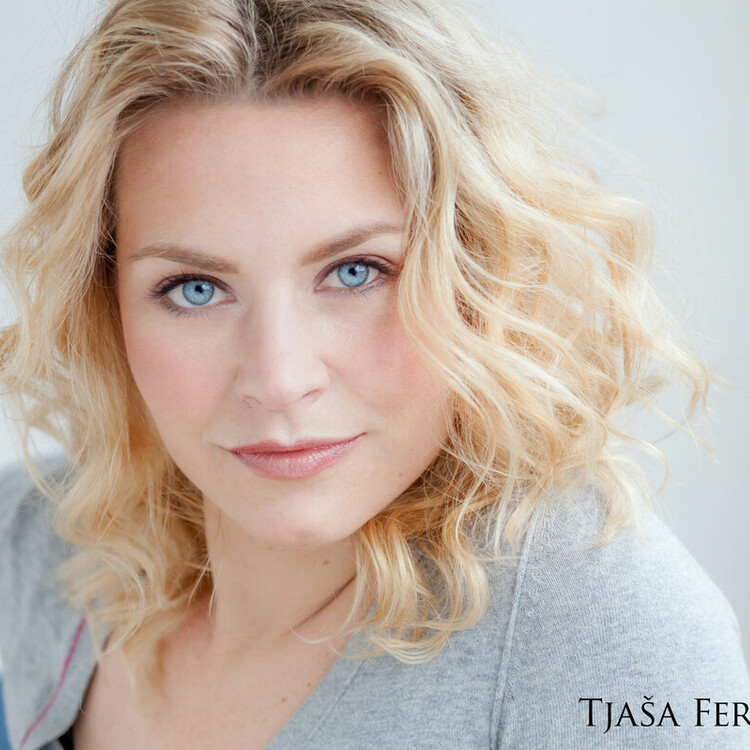
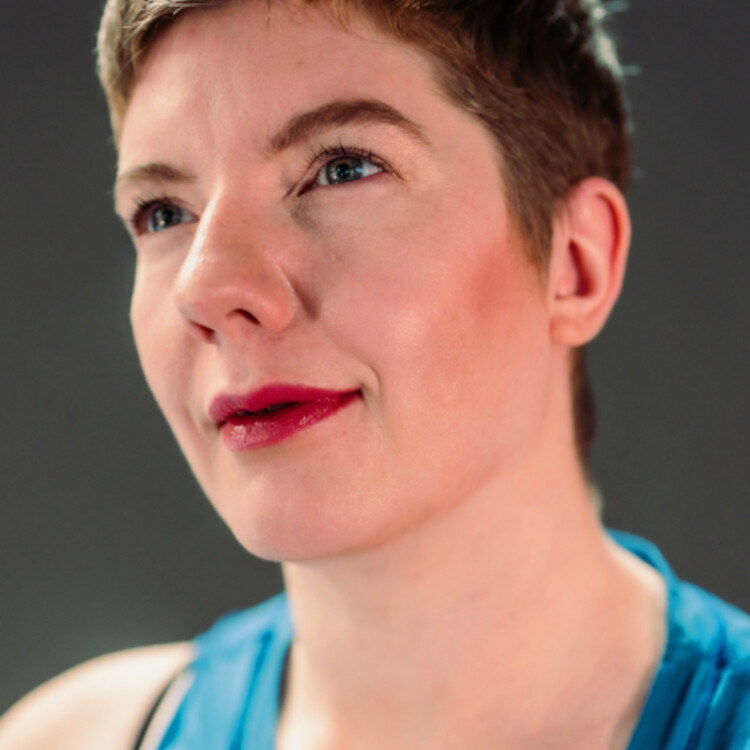
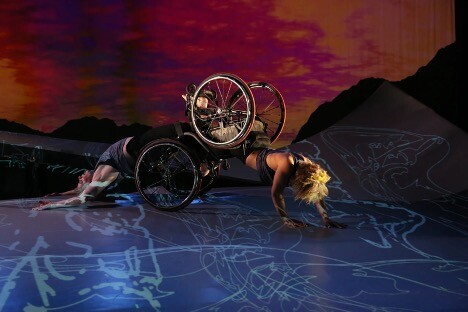
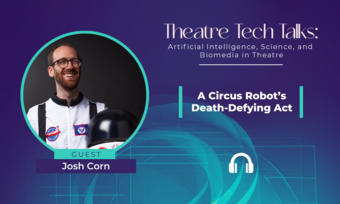


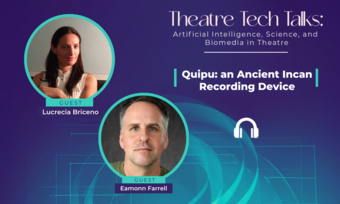


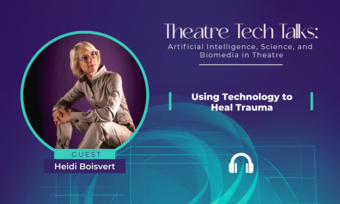

Comments
The article is just the start of the conversation—we want to know what you think about this subject, too! HowlRound is a space for knowledge-sharing, and we welcome spirited, thoughtful, and on-topic dialogue. Find our full comments policy here